It’s spring again, and we’re facing our fourth year with a yard of snow-weathered dirt.
We haven’t achieved our dream of an organic lawn without weed killers just yet, but we are still trying, and we think we've finally found the solution.
It hasn’t been easy. We’ve invested thousands in the yard, mainly to remove weeds from past failed efforts, and add more dirt.
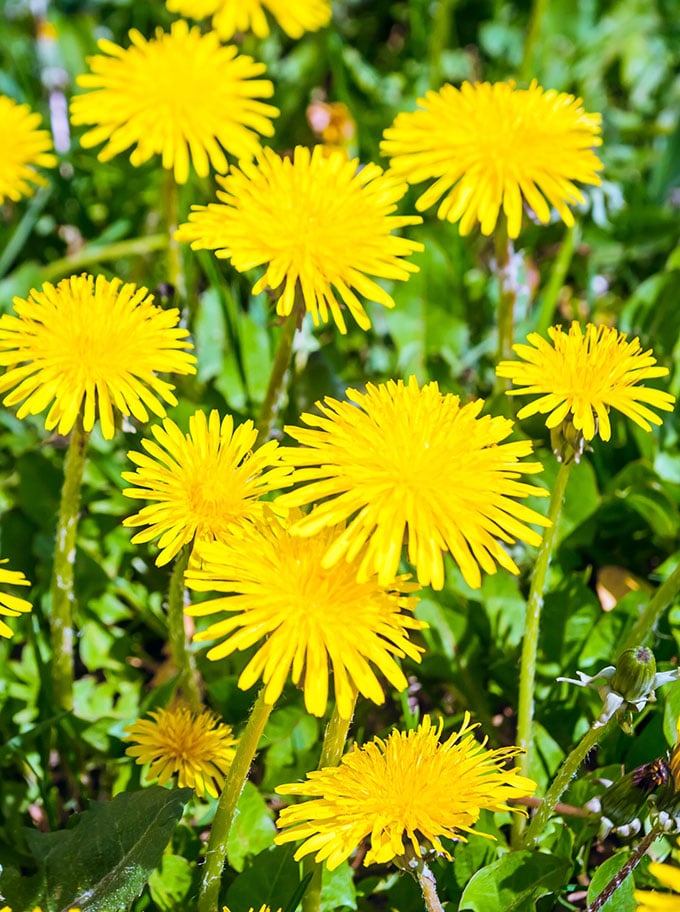
Last fall, we raked off the top layer of practically our entire lawn after the crabgrass died … with backbreaking effort.
Crabgrass is a menace. It masquerades as grass, but it's spiny and spreads from its center, smothering everything in its path.
How did the perfect green lawn we had when we moved in end up like this? We gave up on weed killer. That’s what!
Let me tell you, the weeds started to take over quickly.
At the beginning of last year, our organic lawn was a literal sea of dandelions. We hired a crew that hacked them out with a crowbar.
To our beautiful mess we added compost, and replanted what unfortunately turned into the aforementioned web of crabgrass.
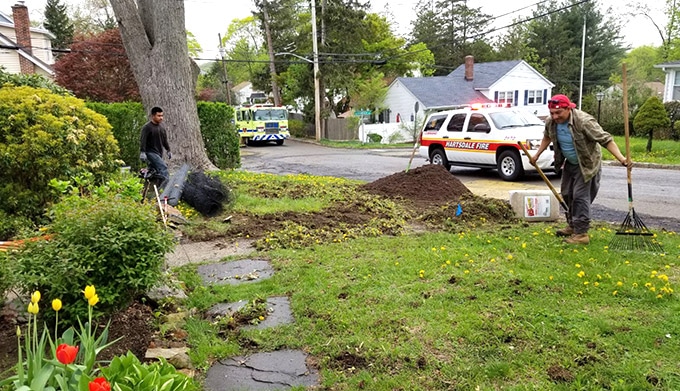
In desperation, we hired a landscaping company to cut the weeds on a regular basis so as to maintain the illusion of a lawn.
We argued with our new guy all year about weed killer.
Of course, he wanted to use weed killer and give us a beautiful green lawn that he could be proud of.
Our response was always a gentle "no."
This year, we are having that discussion again. Our guy tells me that Roundup isn’t harmful at all. That everyone uses it, and that it is the only way to have a green lawn.
Sorry, but Roundup is harmful, and it's not true that it's the only way to get a nice lawn. (Although, maybe it is partly true.) Our organic lawn may never be perfect. But at least it won’t be poisoned.
Keeping The Organic Lawn Dream Alive
I’ve seen a beautiful organic lawn that is free of weed killer. Thick, lush, dark green blades of perfect grass, as far as the eye could see.
It’s at the place where my organic gardening mentor keeps his garden. I asked him how he did it without using weed killer.
The answer, he said, is simple. The soil isn’t compacted.
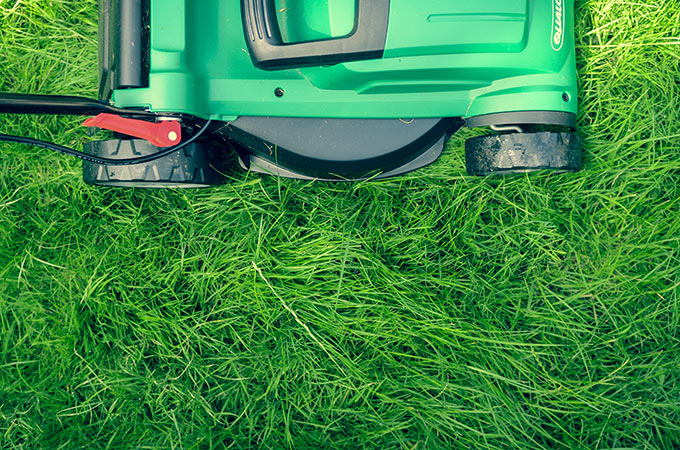
Soft, healthy soil is the main answer to the question of how to grow a lawn organically.
It makes sense if you think about where weeds thrive. Empty scrabble lots, sidewalk cracks. Anywhere that nothing respectable will grow, weeds grow.
The second point is to plant a diverse set of grasses, effectively turning a monoculture into a biodiverse environment.
You see, nature doesn’t support monocultures of a single plant variety, which is why the weed killers are needed. To take an organic approach, you have to try to work with nature.
You will never see a perfect lawn in nature. They came from humans’ desire for aesthetic order.
Why I Considered Using Weed Killer
I have to be honest with you. I seriously considered allowing weed killer in my front yard and side yard, which is away from my garden, and more in the public eye.
I was lured by my lawn guy’s demurring about “letting him do his job and we’ll have beautiful grass.”
I was also fearing the great unknown of the upcoming year, and whether we’ll be able to finally achieve our dream, or face another failure.
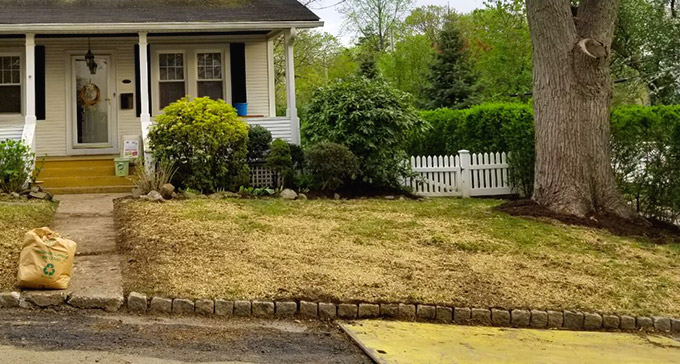
However, as I was thinking about it, I happened to see our neighbor applying weed killer, and it reminded me of why I started my garden in the first place.
It was a darn organic gardener at the other neighbor’s who stopped ME from applying weed killer in year one.
That was when I was at the very beginning of freaking out about the onslaught of weeds in our yard.
I even wrote about it.
I also stopped by Home Depot, and saw the weed killers and chemically-treated seeds lining the shelves near the cash registers.
There aren’t any other solutions on offer! This is part of the reason it took me so long to find our solution, which I have detailed for you down below, step by step. It is also why I am writing this post.
So even though our dirt is thin and compacted by our 150-year-plus maple tree in the front yard, I am standing my ground.
My answer about weed killer is a resounding NO!
The Plight Of American Farmers
Unfortunately, monocultures like most Americans’ front yards are the biggest reason why our food system is in deep trouble.
We’re dependent on chemicals, more and more of them, to grow our food. And it’s going nowhere good, and fast!
Today I read the story of farmer Adam Chappell in Civil Eats, and it broke my heart.
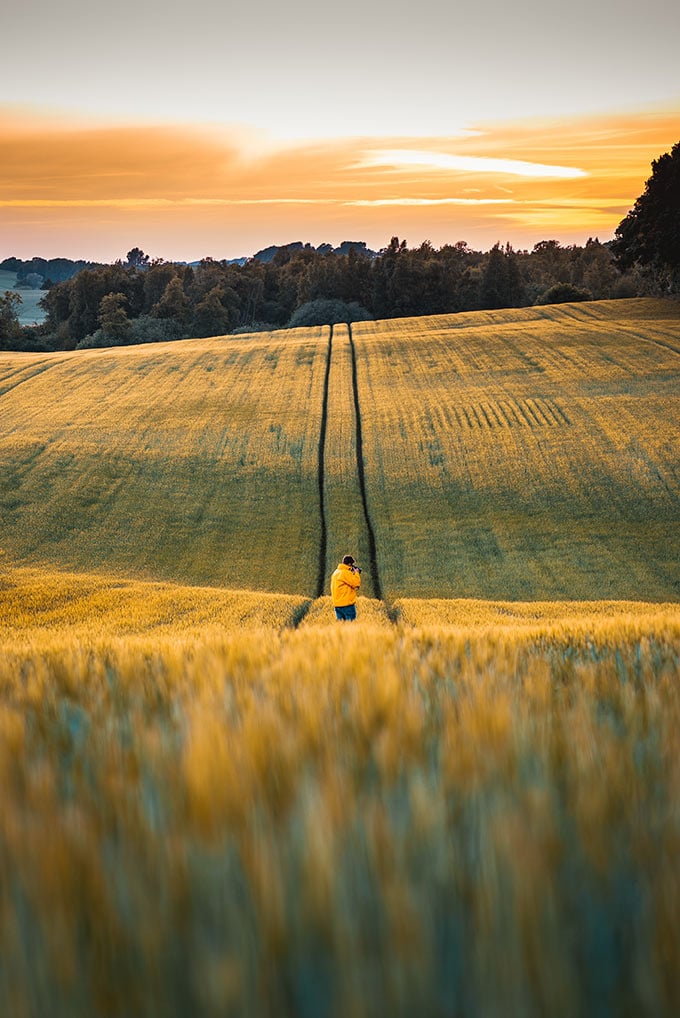
His experience is part of a look-back at the last decade of farming in America, which involves genetically modified crops (GMOs), and more chemicals. (You may not be aware that GMOs don't grow without the chemicals, and that the same companies sell both.)
The farmer said ten years ago, “GMOs were marketed as the environmentally friendly way to do it.”
You’ll even see that kind of marketing if you visit Monsanto’s website.
However, Adam said, “all we’ve done is created a treadmill that a lot of people are having a hard time getting off of.”
He goes on to describe how a particular weed, called Palmer amaranth, was crushing farmers’ yields.
At first, glyphosate, the primary active chemical in Roundup, killed Palmer amaranth.
But after six years it no longer worked.
Now they’ve added another chemical, a class of PPO-inhibitors. (Whatever that is. 🙂
But after three years, Palmer amaranth has won again, and the farmers were told to use more quantity of the same weed killers to try to solve the problem. Basically there is no solution.
Adam describes how farmers are desperate for solutions. They’re hardly making any money out there.
Thankfully, Adam found a couple of innovative agricultural scientists who’ve been proving the economic value of planting cover crops to bring life and diversity back to the fields.
Simply by adding a rotation of cereal rye, he’s been about to reduce chemical AND fertilizer use significantly.
Adam’s story gives us hope.
It’s All About The Soil
There has been a lot of talk in the media recently about the microbiome. It has always been there. It’s just that scientists have only really discovered it of late.
The microbiome refers to the billions and trillions of microbes that coexist with humans on earth. They are everywhere: inside our bodies, on our skin, and in the dirt.
When we use weed killers, pesticides, fungicides, and industrial fertilizers, it is killing billions of these microbes, killing the life in the soils.
These microbes are responsible for getting us the nutrition we depend on from our food. Microbes, plants, oxygen, water, and the sun all work together so the plants get what they need from the soil.
When you taste a vegetable grown in organic soils, you are tasting the life in the soil. It tends to be sweeter, more mineral, complex, and it could even surprise you.
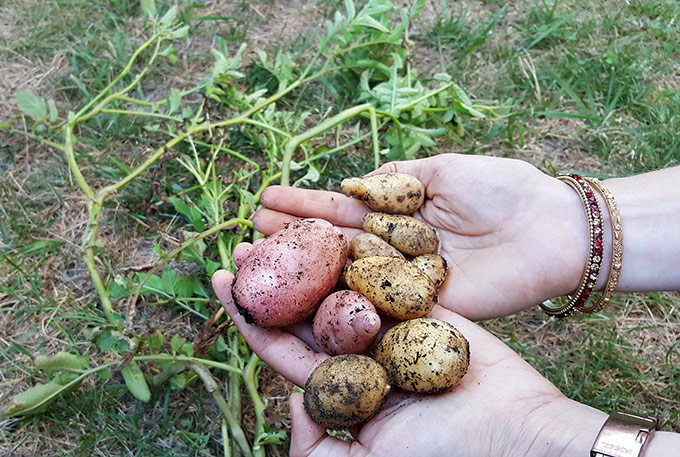
If this isn’t something you’ve tasted recently, I encourage you to go to a farmer’s market and find produce grown by a small to medium sized farm.
Some large organic farms are following practices that mirror conventional farming, and these farms can sometimes give consumers a bad impression of organic food if the difference cannot be tasted.
As for our spring organic lawn solution without weed killers, we’ll be bringing in more topsoil because we believe soil compaction is our biggest impediment to an organic lawn.
It'll be more money, and more backbreaking work. But nobody said it was going to be easy.
We’ll also aerate our soil to loosen it so that oxygen can get in and support the microbial activity down under.
Most importantly, there will be no poison on our lawn to kill the microorganisms and worms that we have cultivated in our dirt so far.
It takes three years to transition to an organic farm. Maybe it is the same with a lawn?
Over time, with any luck, we are betting that nature’s wisdom will take its effect.
Best OrganicLawn Seed, Organic Fertilizer & Organic Weed Preventer
It took us a long time to discover Jonathan Green, an American company that makes high quality grass seed, organic fertilizers, and organic weed preventers.
I am so happy to recommend them to you, because its clear this company has the right approach.
We have started this year with Jonathan Green’s 4-step New American Lawn Plan to create an organic lawn.
Step 1: Use an organic weed inhibitor
In March, we applied a product containing organic corn gluten to our dirt to inhibit weed seed germination. We used Espoma organic weed preventer, with is similar to what Jonathan Green offers.
It's basically corn, which is kind of ironic, since corn is the biggest GMO crop in this country that has contributed to chemical use.
As soon as the weather warms, the weeds will start coming. So far, there's not much on our lawn, but it's still early days.
You do have to wait 6-8 weeks to plant grass after applying the inhibitor, so you have to time it right. Luckily we did. So we are off to a hopeful start.
Step 2: Condition the soil
After aerating and adding top soil, we’ll add Jonathan Green’s organic soil conditioner, which is designed to activate the soil’s biology. Aptly, it’s called Love Your Soil.
Step 3: Adjust pH and fertilize
Then, we’ll use MAG-I-Cal to adjust the soil's Ph levels, and GREEN-UP to add iron and phosphorus.
These are synthetic products (technically chemicals) that Jonathan Green recommends as amendments when you are just getting started on a transition to an organic lawn.
Later, you can just use an organic fertilizer, like this one, or this one, for regular maintenance.
Step 4: Use high quality grass seeds
We will use this Jonathan Green’s high quality grass seed. The product boasts roots that can grow up to 4 inches deep.
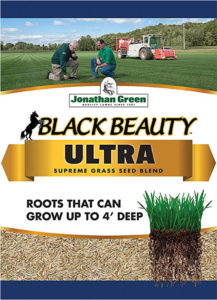
Deep roots are very important for soil health, since the roots can more easily find water, and deep roots create soil structure, which microbes like.
Jonathan Green also sells a crabgrass-specific germination inhibitor that can be used at the same time as grass seed.
Reviews are mixed on this one though, and better on a crabgrass inhibitor that goes on after germination, so we may go with the latter.
EXTRA STEP: Watch those weeds carefully
It should be noted that the crabgrass inhibitor I wrote about just above is referred to on the packaging as a pesticide, with chemical warnings and all.
I am really not a purist, and just a person looking for better solutions, so I am going to think further before using this one. I may, or I may not.
We may just go for the option of pulling weeds as they emerge. Maybe an hour a week of wholesome exercise will get the job done.
You may be wondering too, is there is a safe organic weed killer available?
The answer is not really. There is nothing to kill weeds on contact without killing your grass. But there are fairly effective organic certified weed killers that kill weeds and grass, so you have to be very careful when applying it.
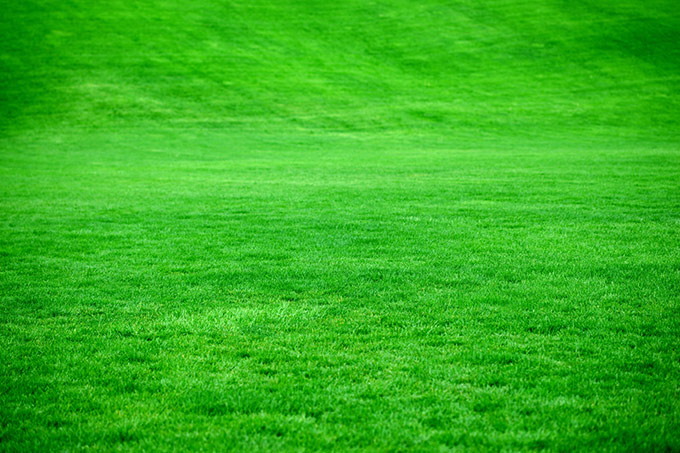
All of Jonathan Green's products are designed to work together, so I feel like this is a good plan. You can see all these products below, which are available at Amazon.
I will update you as to how it turns out.
If you have any experience growing an organic lawn without weed killer, we'd love to hear from you in the comments below.
If you liked this post, please share it with your friends on social media, or leave a comment below.
For more Buttered Veg lifestyle content, follow me on Pinterest, Facebook, Instagram, and Twitter.
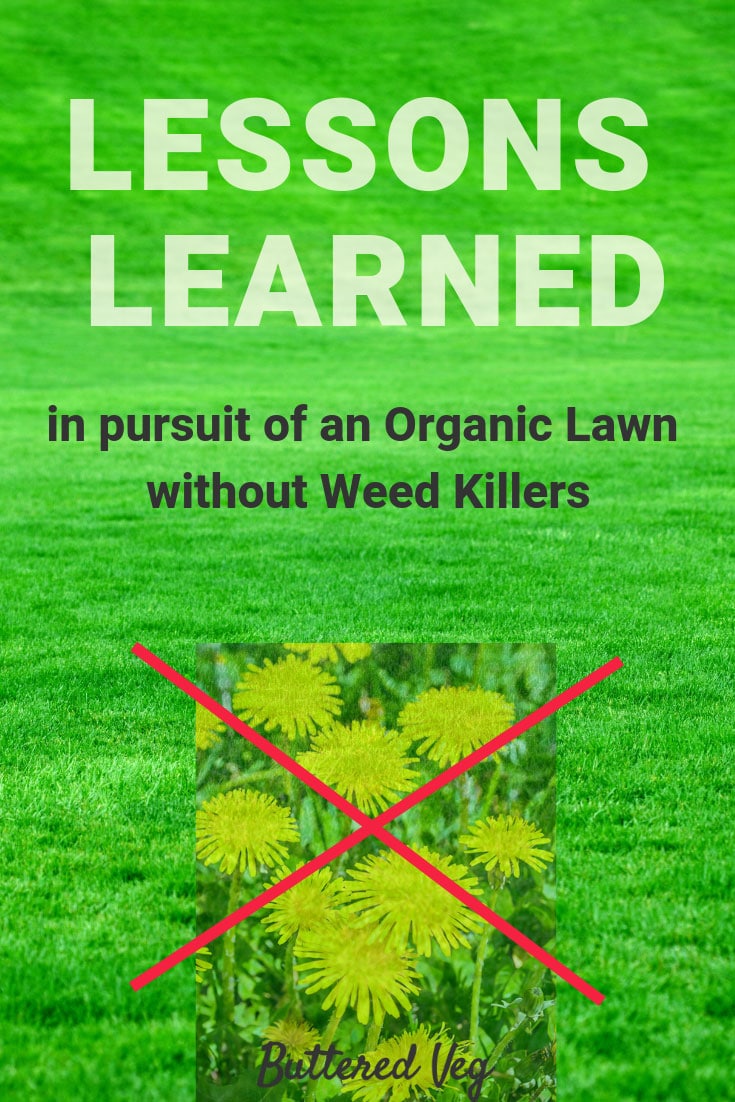




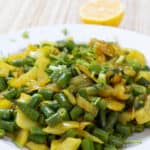
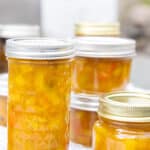
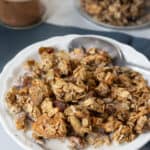


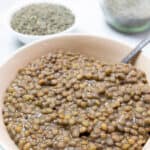
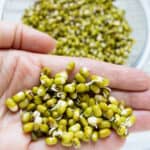
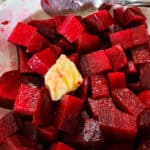

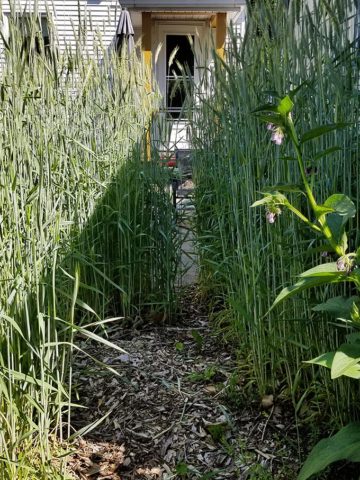
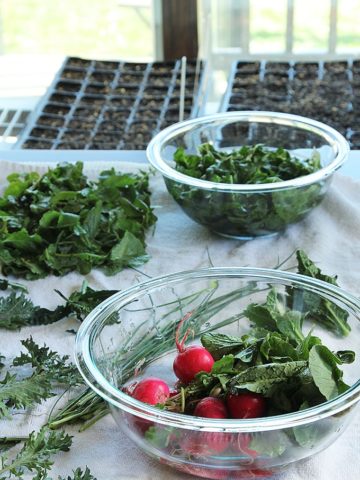
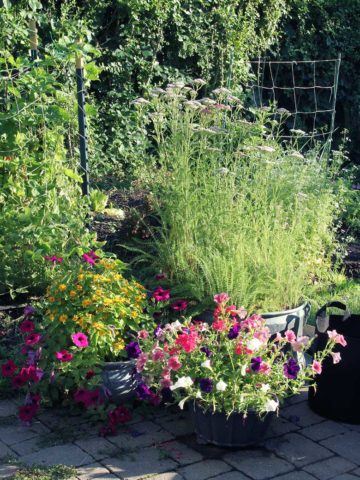
Nancy
I am in San Diego inland and have dirt for a back yard June thru January ( usually). We’ve had lots of rain and I love the green that shows !! I actually like any green weeds are green !! And I need something that grows and keeps down the dust from the dry dirt. We have two dogs as well …we’ve had fescue sod thru the years snd I think the previous owners might have put Burmuda grass because it sometimes shows up! I really don’t care what kind of green
dirt holding “grass “ we have !!! Any thoughts ? The comments from the person who mentioned baby shampoo was very helpful !&
Andrea
Hi Nancy, That certainly sounds like a tough situation! What do your neighbors do? When it comes to nature, I've learned that it is very particular to individual conditions. So I think asking around is going to be your best bet. Good luck finding a solution that works! —Andrea
dchall8
Hello Andrea. I am sorry for being 2 years late to your predicament, but I believe I can help with several aspects of your organic lawn care program. I've been writing about organic lawn care for 20 years and have been the moderator of three organic lawn care forums. Lawn care forums are more helpful than blogging because you often have an audience of critics rather than an audience of followers. Let's look at some of the things you wrote.
By and large, it's great! Sadly I'm not going to address the great parts of your thoughts, but if I don't comment on it, then that's the great stuff. Well done.
You said, "This past year I finally understood that we have dandelions because our soils are compacted." You misunderstood. There is no cause and effect between dandelions and compacted soil. To start with you very likely do not have compacted soil. You probably have hard soil. Hard soil and compacted soil are two different things. Compacted soil is caused by running your marching band practice over the same spot on the football field, day after day, even when the soil is moist. If you haven't been doing that, you very likely only have hard soil. Hard soil is hard whether the soil is dry or moist from a decent rain storm. This type of hard soil can be addressed in a very simple way, which I'll mention a little later.
You said, "So even though our dirt is thin and compacted by our 150-year-plus maple tree in the front yard, I am standing my ground." Again you misunderstood what was going on. Trees do not compact the soil. Look at any forest.
You said, "As for our spring organic lawn solution without weed killers, we’ll be bringing in more topsoil because we believe soil compaction is our biggest impediment to an organic lawn." NOOOOOooooooOOOOOO! More topsoil is not the solution to compaction. More topsoil is what has led to your current excess of topsoil. Your pictures show it perfectly. Ideally your soil level is the same as the adjacent concrete. In your case the soil mounds up into a crown at the center of the yard. You have many, many cubic yards too much topsoil already.
You followed up the above statement with, "It’ll be more money, and more backbreaking work. But nobody said it was going to be easy." This is going to be a lot easier than you think. Just don't bring in more topsoil. You are making this a lot harder than it needs to be. LOTS harder.
You said, "We’ll also aerate our soil to loosen it so that oxygen can get in and support the microbial activity down under." I am 99% certain you meant that you are going to run a core aerator over the lawn to pull out plugs and open up 1/2-inch holes all around. That is the universally accepted explanation for 'aeration' in the lawn community. We (the homeowner lawn forum community) have done a lot of reading. It has been found that the sports lawn community applies surfactants (soap) to improve water penetration into their COMPACTED (!) soils. Football fields have the worst problem, but golfers complain the most. A golf course has to move the holes around on the greens, because the soil becomes compacted around the hole if it is left too long. By applying a surfactant, they improve water passage through the compacted soil which improves the health of the microbes you have mentioned. Sports facilities use a surfactant which costs nearly a hundred dollars per gallon. We homeowners have found that baby shampoo works perfectly. Apply at the rate of 3 ounces (or more) per 1,000 square feet with a hose end sprayer. If you have 2,000 square feet of lawn to spray, put 6 ounces of shampoo into the sprayer, fill it with water, and spray it all out as evenly as you can at any sprayer setting. Follow that up with a good irrigation or rain storm and you're done for the next many years. All I can say is try it. It will cost you 50 cents worth of shampoo.
You said, "It takes three years to transition to an organic farm. Maybe it is the same with a lawn?" Ummmm, the USDA requires 3 years of documentation for a farm, but you can transition to an organic lawn before the end of the day. Just stop applying chemicals. The USDA police are not coming to check on you unless you ask them to.
You said, "In March, we applied a product containing organic corn gluten to our dirt to inhibit weed seed germination." We've done some research. Iowa State University patented the use of corn gluten meal as a herbicide based on some very weak test results. The very, very best performance they could achieve was 80% effectiveness, and that was not all that repeatable. If 20% of the weeds still germinate, you still have a weedy lawn.
You followed up with, "It’s basically corn, which is kind of ironic, since corn is the biggest GMO crop in this country that has contributed to chemical use." Corn gluten meal, which we refer to as CGM, is what is left of the corn kernel after all the carbohydrates are stripped off to make corn syrup. Farmers buy it by the truckload because it is very high in protein. Being high in protein, it makes an excellent organic fertilizer. Organic fertilizers are out of the scope of this, but I thought I'd mention it in case you thought you wasted the Espoma product.
You said, "You do have to wait 6-8 weeks to plant grass after applying the inhibitor, so you have to time it right. Luckily we did. So we are off to a hopeful start." I have used CGM at double the recommended rate, every 4 weeks for an entire growing season. I found no suppression of weeds. I'm only one guy, but I seriously doubt the effectiveness of the product as a weed control of any kind. I did have the best lawn I've ever had with the monthly heavy application of organic fertilizer, though. The grass was thick as cabbage.
You recommended the Love Your Soil product. Here is some information from the Love Your Soil label: If you’ve struggled to grow a great lawn in the past, poor soil that is hard and compacted is often the problem. LOVE YOUR SOIL assists in breaking up clay and compacted soils, which improves root penetration, promotes growth and root mass while helping release trapped nutrients in the soil. Here are the ingredients listed: Derived from: Calcium Sulfate Dihydrate, Calcium Carbonate, Iron Humate and Molasses. Ok, me again...Note that with the exception of molasses, this is a chemical product. Further it is not a fertilizer despite what the label says about applying fertilizer. Fertilizer has an NPK value. This stuff does not. This stuff is a calcium additive for use only on acidic soils. The casual observer cannot determine whether to use it, or how much to use, without a very good soil test. Soil testing is also out of scope, but 98% of them are not good.
Here are the Jonathan Green Green-Up label ingredients: Derived from: Urea, Polymer Coated Urea, Muriate of Potash, Diammonium Phosphate. According to the USDA, this is a 100% chemical fertilizer. Urea is an organic chemical; however, it is derived from natural gas, so the USDA defines it as a chemical. If you're being picky, it's not organic. If you're being practical, it's half chemical due to the potassium and phosphorous. You don't need to use chemicals in an organic lawn.
Here are the Mag-I-Cal label ingredients: Derived From: Calcium Carbonate. That's all. It is 35% calcium for use only on an acid soil. If your recent soil test tells you you need to add calcium, this might be the product for you.
You said, "These are synthetic products (technically chemicals) that Jonathan Green recommends as amendments when you are just getting started on a transition to an organic lawn." Yes, they are chemical fertilizers, but...and I should be shouting that,...BUT, criminy, you don't need to transition to an organic lawn!! (Is there a law about how many exclamation points I can use?) The idea of transitioning to an organic lawn is marketing hype from sellers wanting you to continue using chemical fertilizers for as long as you buy into the transition thought process. If you stop using chemicals today, you transitioned. Boom! You're done transitioning. It's happened. You don't have to wash out the chemicals in the soil, because the soil microbes have already processed them. There are some persistent chemicals, like DDT, but most of those are long gone. Chances are very good you are not using any of the current persistent chemicals, because they are not sold to homeowners.
Here are Jonathan Green's Organic Lawn fertilizer ingredients: Derived from: Feather Meal, Soybean Meal, Blood Meal, Sulfate of Potash and Calcium Carbonate. Finally we have something organic, mostly. Feathers, beans, and blood are high in protein which feeds the soil microbes to make your soil healthy. These are what I'm talking about! However, you need more info. Blood meal decomposes practically instantly and can really burn your grass if you use too much. For that reason you have to use this product according to the label instructions. Feathers decompose into usable protein in about 3 months, so it is not a great fertilizer if you're looking for immediate results. Soybean meal is the happy medium. So what you'll see with this product is a quick green up from the blood meal, a sustained greening from the soybean kicking in after 3 weeks, and a super long term benefit from the feather meal after 3 months. Then they add those pesky chemicals the sellers always want to include in their "organic" fertilizers. You don't need them.
Here are Jonathan Green Crabgrass Plus ingredients: Siduron plus Plant Nutrients Derived From: Diammonium Phosphate, Urea, Potassium Chloride and Polymer Coated Sulfur Coated Urea. If you want to control weeds without chemicals, this is most definitely NOT the product to use. This is a weed n feed product.
In reference to the above product, you said, "I am really not a purist, and just a person looking for better solutions, so I am going to think further before using this one. I may, or I may not." Hopefully you did not use it, but, whatever. You have not destroyed the planet. But not being a purist may be your way out of the weed issue. Hold that thought for a year, though.
You said, "All of Jonathan Green’s products are designed to work together,..." This is more marketing hype to keep you coming back for more. There is no grand design for chemicals to work together.
Okay, I'm done with that part. Remember, everything else you wrote was golden! Here is what the combined forces of Internet lawn laymen and Internet lawn professionals have come up with that you have not read. There are three important concepts to lawn care, watering, mowing, and fertilizing. I maintain that proper watering will carry you 80% of the way to a nice, weed free(ish) lawn. Proper mowing adds 15% and fertilizer has hardly any effect. Your numbers may vary. Before I detail the essentials, the prime essential for you is STOP SEEDING IN THE SPRING. Was I shouting? Sorry. Spring is the only time crabgrass seed wants to germinate. If you are seeding real grass beside the crabgrass seed already in the yard, the crabgrass will sprout in 4 days to make you think you are a genius. Rye grass germinates in 7 days, fescue germinates in 14 days, and Kentucky bluegrass germinates in 21 days. By the time KBG seed germinates, you'll already have a yard full of little crabgrass plants. Furthermore, crabgrass was designed by Mother Nature to thrive in the heat of summer. Your cool season grasses are not. Spring seeded grasses will not have time to develop hardy roots to suffer through the summer heat and dry spells. However, if you seed these cool season grasses in August, you will have zero crabgrass plants and will have the next 3 months for your new grass to prosper before you get frost. Really, seed timing is your biggest problem. Also if you seed in August and realize in early September that you missed a spot, you still have time to put more seed down.
Watering: Deep and infrequent is the mantra. Deep means 1 inch all at one time - not spread out over a daily routine. Always deep water. Infrequent means never more than once per week in the hottest heat of summer (maybe every 5 days). With temps below 70 never deep water more than once per month.
Mowing: Mow cool season grasses at the mower's highest setting. In the heat of summer, skip mowing until the temps back down into the 80s.
Fertilizer: First application on Memorial Day. Don't listen to anyone selling you fertilizer in February for March application. Second application on Labor Day. Last application on Thanksgiving(ish). The very best organic fertilizer you can buy in bulk is soybean meal. Any feed store in your area sells it in 50-pound bags. The application rate is 15 pounds per 1,000 square feet. It has no chemicals. It's unadulterated animal feed and works just like commercially bagged organic fertilizers containing the same stuff. It takes 3 weeks for the soil microbes to turn the soybean into plant food, and you'll notice the green up. Buying by the plain brown bag is about 1/7 the cost of commercial organic ferts for the same performance and confidence you are "more organic" than the guy using labeled bags.
Weed control: If you do all the above, which is fully organic, you will have minimal weed pressure. You'll have a dense turf; deep, heat resistant roots; and a tall canopy of grass that helps to minimize weed pressure. One more thing about weed control for people who want to maintain an organic lawn. I'm not necessarily recommending this for you, but others have found that using a chemical like Weed-b-Gon as a one-time, spot-spray, for certain weeds, in mid April, is enough to make their lawn look 85-95% great for the rest of the season. WBG is a foliar mist, not a soil drench, so the effect on the environment is, they say, minimized. A spray like this takes you out of the USDA certification qualifications, but if you are not a purist, you might make this concession and find yourself complaining about weeds a lot less.
Andrea
Hi there! You are absolutely amazing, and a godsend. I, and all of our readers I am sure will really, really appreciate your analysis and advice. I will follow it this year, and you are just in time to save us some mistakes. You know, after we pulled out all the dandelions that year in the early spring, we planted new grass and got another major lawn filled with crab crass - just what you predicted. Had to pull it out again. Last year was better, but we used JG crabgrass preventer at the right time, and it helped a lot, but it is not organic. —Cheers, Andrea
dchall8
I hope things turn out better for you this year. I Googled feed stores near you and found none. I've never seen that before! I did find some horse stables, so you might call them and ask where they buy feed and tack. Those places should have soybean meal.
Isaac Momperousse
If you can grow weeds you can grow grass... You have weeds because your soil and the soil you brought in have weed seeds.
Lush thick grass turf next to trees is not a natural thing . It does not occur in nature, if you want grass to grow you must eliminate the weed seeds (pre -emergent, or solarization) and get rid of the tree. A green turf doesn't need round up but you will need some sort of chemical pre emergent and post emergent... At least until you get a good lawn established and then from a point of strength you can manage your turn through good cultural practices that requires much less weed killer .
Remember round up is horrible because it is sprayed on food... No one is going to eat your grass and the round up will chemically breakdown after 7 days... It is fine for your lawn but there are so many other options then round up.
Andrea
Hi Isaac,
Thank you for your thoughtful comment and advice. We do have a huge tree. Finally, I accidentally purchased a chemical pre-emergent for crabgrass last year, and used it at the right time, and it made a big difference. I guess my organic mindset was more okay with preventing weeds from growing in the first place. I really appreciate your point about a "place of strength," and the differentiation between food and lawn. Very rational.
Alison
Herbicides do not break down! They bioaccumulates everywhere. That is why it’s in everybody’s body if you get tested even if they only eat organic and why all the areas that experience run off when it rains have dead zones. Millions of people have chronic disease from the effects of glyphosate and I guarantee nobody’s eating plants within seven days after they been sprayed. In fact that only works with wheat because wheat needs to be dead but if you spray weed killer on any other plant there wouldn’t be a plant for you to eat. So this BS that these toxins created through bio warfare are somehow inert after 7 days is a huge lie told by Monsanto so they could get rid of all their excess chemicals. They did such a good job at convincing people of this that they continued to make billions of dollars creating more.
Andrea
Hi Alison,
Thanks for educating us!
—Andrea
Salvana Shakaib
Hi, I just have a question. What's the Obsession with weed free lawns? Why do we need perfect lawns. When we go to the Woodlands, nothing is perfect, but it is breathtaking and beautiful. It's natural, that's how it's meant to be. My lawn is overtaken by chickweed, it's a white carpet and looks beautiful. Plus the bees and butterflies love love it.makes my heart sing. If we all learn to embrace nature we will be fine. Sadly we live in a capitalistic society that's trains us to see things a certain way. Lush green manicured lawns support the herbicide, pesticide and fertilizer industry that in turn gives us cancer! But we are ok with cancer, however we are not ok with weeds. There needs to be a change in mindset.
Andrea
Hi Salvana, I have been working on my own mentality, and I really appreciate the comment. I have been going with the idea that if I have sufficiently healthy soil and diversity of grass species then I will have a healthy crop of grass, but it has been a few years since i wrote this, and I can tell you that the saga continues. It is very, very hard to get grass without weeds. This year we have the healthiest ground yet, and the best grass yet, but we also have a diversity of other plants in our grass, and I am trying to appreciate everything ... but even for someone as open-minded as I am on the matter, it is still quite hard to embrace the weeds on my own lawn. To be clear, I do not support herbicide, pesticide, or artificial fertilizer use. If weeds is what we get by not using chemicals, then we should let it be. I will keep working on it. Thank you again.
CBD Oil Kansas City
Couldn't agree more on your words here, kudos!
Andrea
Awesome, thanks! Assuming that you are pursuing the same goals, kudos to you too!